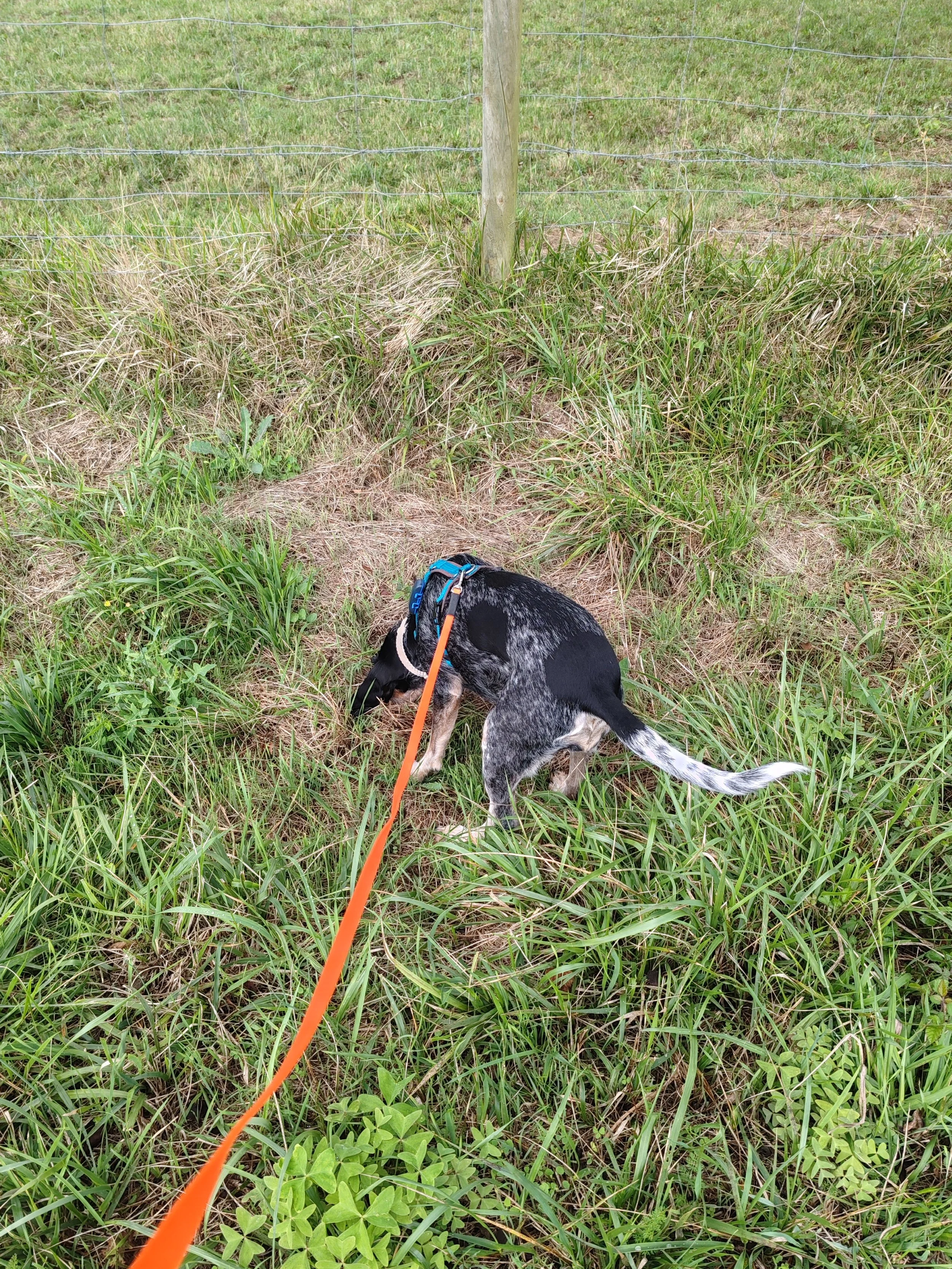The Tricky part of Let them Choose
There is a fine line that we must walk between allowing our dogs to choose what to do and getting into sticky situations. All of us that share our life with dogs have had our fair share of this. Even the calmest dog can get excited at the sight of a squirrel!
I live with 3 dogs, each with their own personality, likes and dislikes. It has been easy up till now to let them choose and manage the environment if anything got a bit difficult. More of these difficulties in a moment… but now we have Vesper at home. A very traumatised dog that fears everything and everyone around her. Allowing her to choose is one of my priorities, I would even say is my top priority, but I also must think very carefully about what I would do if I had to redirect the situation. I can’t be impatient, loud, rush things, let frustration get the better of me, make her do anything, tell her no, or get angry. A few days ago, we had one of these situations, she stopped for a sniff and found some mouse holes. She was fixated on them, sniffing loudly, and then she started to dig. This is hunting behaviour. I believe very firmly that my dogs should not disturb other animals. I will always do my best to remove my dogs from a situation where they are annoying, scaring or putting another life in danger. Part of being ethical, kind, and respectful trainers has to do with our values and beliefs, and these are not restricted to dogs. We use them across species.
Other examples of situations where we might not be in a position to let our dogs choose are approaching another dog, approaching people, letting your dog choose the route of the walk and so on.
So, what do we do then?
We consider the following topics, and they each deserve their own article, fundamental to the success of your communication with your dog.
Leash handling skills
This is the one most important thing that you can learn to help your dog. Understanding how to handle a long leash to allow your dog to explore, retreat, make her own choices and have a pleasant walk as a team takes time, patience, and a lot of practice. Sometimes we get frustrated while handling the leash and we pass on our own feelings about the situation to our dogs without even knowing it. Information travels both ways along the leash and we must learn to interpret those signals, as do our dogs. (Note: we are absolutely against any kind of jerking of the leash or any other use of the leash that would cause discomfort, pain or fear in the dog.) There is no substitute for practice, and we recommend that you learn from someone with proven long leash skills. To help you with the basics you can watch this video where we explain some of the most important concepts: Securing the leash around your wrist.
Looping the leash so your hand doesn’t get tangled.
Releasing and collecting the leash in a butterfly pattern.
Soft stop: we never stop the dog suddenly, we tell to tell them upfront that we are going to stop them.
Direction of the walk, body position.
When we need to get our dogs, we go to the dog collecting the leash, we never pull.
Smacking sound / Follow me
We use this sound, which sounds like a kiss or a click with the tongue, to ask our dogs to follow us (note: not to be confused with the use of a clicker device, which is a completely different approach). They need to learn it first in a series of steps. It is not difficult for them to understand it quickly. With time and repetition this sound becomes part of our lives with our dogs and a very effective way of communication. One of the ways dog learn is by association, and the more we use these ways of communicating the better we get at it. In time we can use the smacking sound in situations that we want to get our dogs out of. Without raising our voice, pulling on the leash or adding unnecessary tension to the situation. Be very aware when to use the sound. If your dog is sniffing and concentrating, they are unlikely to hear you as her brain is processing all the information. Choose your moment to use the sound carefully.
The direction of the walk
Body language is a large part of communication for dogs and they are extremely good at it. They read other dogs using this skill and also, they read us. This is why we should be very aware about our body and how we use it when we are around them. But it also means that we can use it to communicate with them. When you want your dog to follow you, use your body to tell her where you want to go. Face in the direction you want the walk to continue and wait for her. Don’t pull the leash. If she is still not understanding what you want from her, you can use the smacking sound to make it clearer. But only after you have given her some time to think.
Time to think
Dogs need time to process information and make decisions. This is usually not easy for us humans. We are always in such a hurry! But good decisions come from a place of calm and peace of mind, without being rushed. This is easy to understand if we put ourselves in our dogs’ place for just a moment. Imagine yourself trying to decide , maybe you are looking at a really nice cake shop window, and trying to decide if you want to go in or not. You have such a sweet tooth, you really want to go inside, but you know you shouldn’t, you just had breakfast. Your friend that is with you is in a hurry and starts pulling you from your arm and trying to get you to move away from the shop window. You are likely to make the wrong choice out of annoyance or just to spite her.
In this following video of Vesper you can see all of the items mentioned before in action. When she gets too focused on the mice and I call her with the smacking sound, I also move and position my body in the direction that I want her to follow. I never tighten the leash, I keep it loose and always smiling, allowing her to make choices without rushing her. I give her time to think about what I asked her to do.
Management
Is important to remember that in many situations, it is not about doing something, but about management of the environment. Curving and splitting up are in this category. If we know that our dog gets worried about something we should avoid situations where these things are present. Making them confront them is not the answer because if they get upset by them, there is a big chance the behaviour will get worse. There are better, kinder, and more scientific ways of handling these problems and consulting an ethical trainer or behaviourist should be considered. When things happen, and they do, practice curving and splitting up. They are behaviours that dogs use themselves to communicate with other dogs and we can use them to our advantage. Turid Rugaas’ book on calming signals is always one of our recommended books, and learning about body language should be our starting point.
Reactive and fearful dogs are usually very sensitive dogs put in the wrong situations. If you want to know more about how to handle the walks for these dogs, we recommend the following posts:
Vesper has been with us for 7 months. She is a hunting dog that has been used for tracking wild bore and deer. There is a very strong habit of going out for this purpose. Our kind of smiling leash walks are a new experience for her. She is allowed to explore in nature without having to fulfil her role, her job. We are getting so much better at them. I allow her to make her own decisions on where to go and what to investigate within the security limits of our smiling leash. And we are enjoying every single one of them. Keep practicing all those good habits with your dogs, let them choose and learn to communicate with them, using the smiling leash to your advantage, it will get easier, and your dogs will thank you for it.
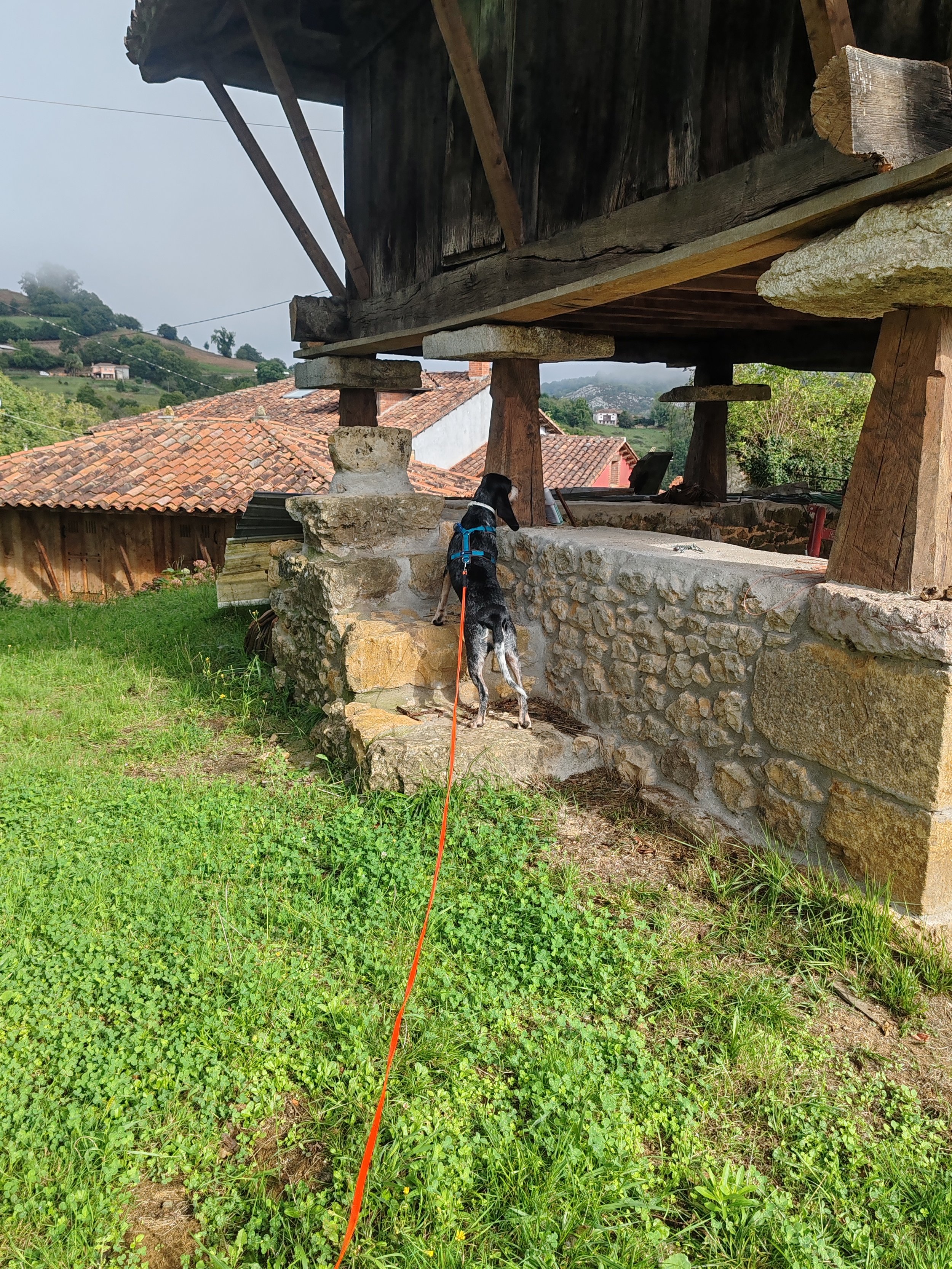
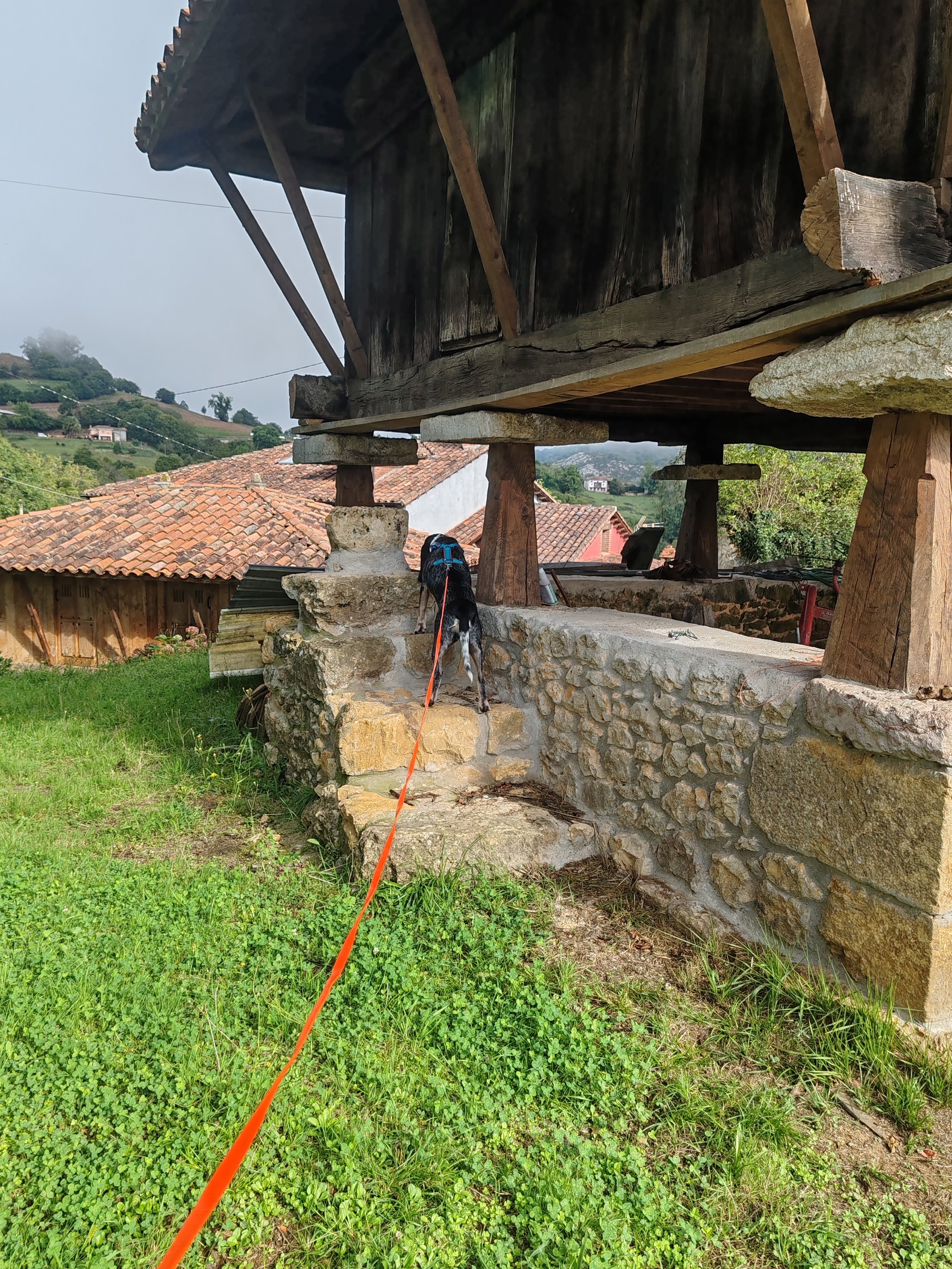
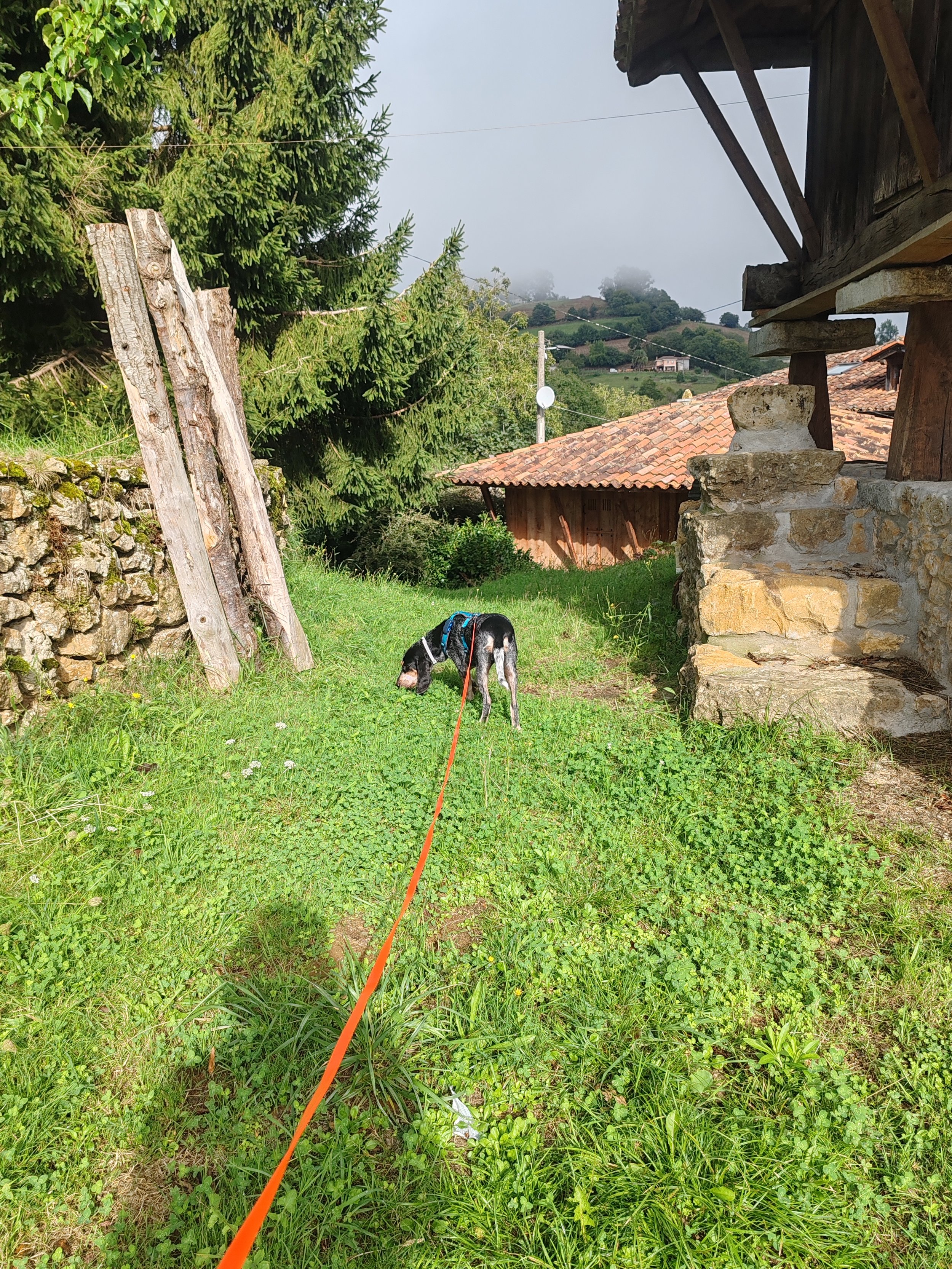
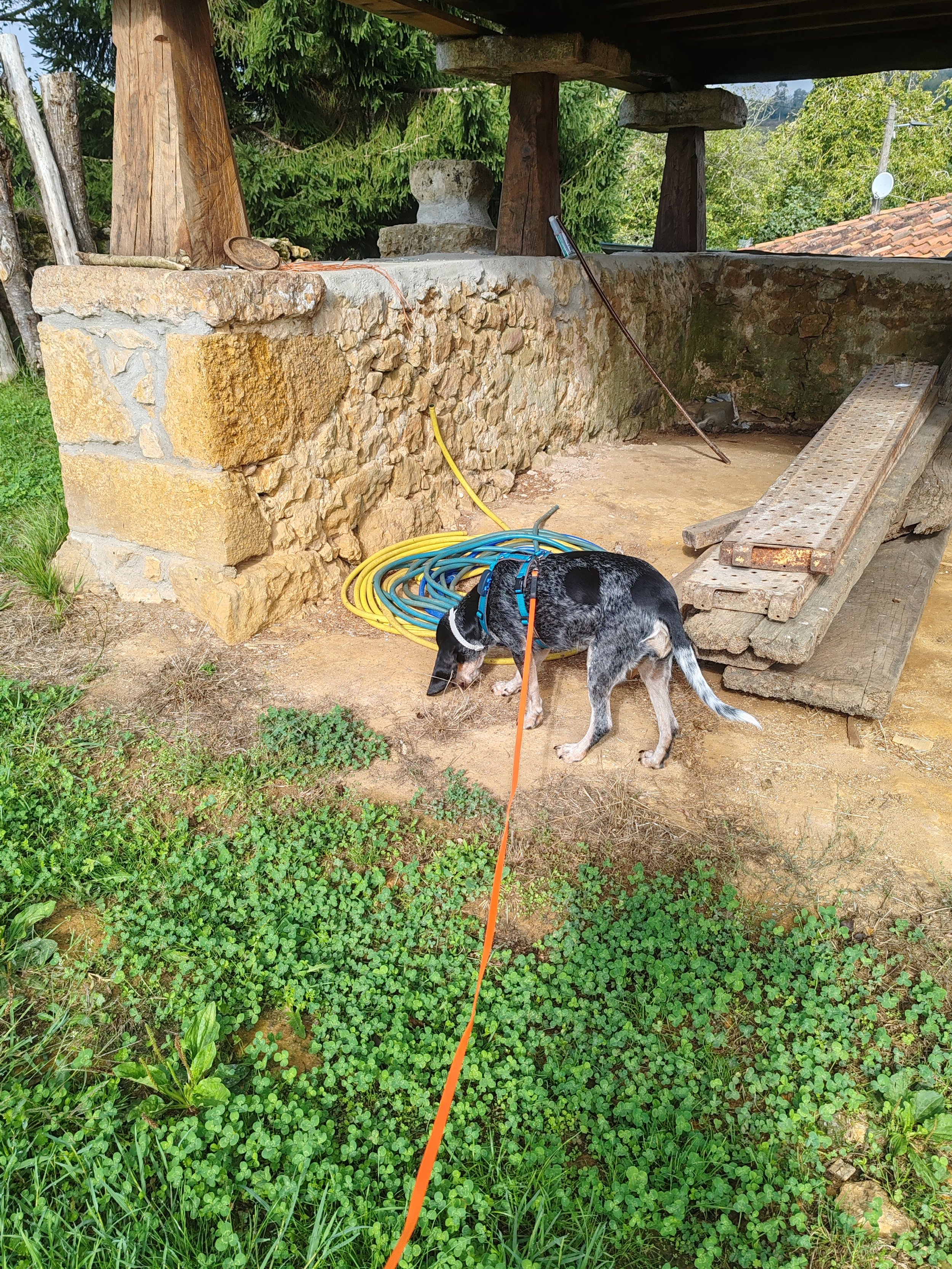
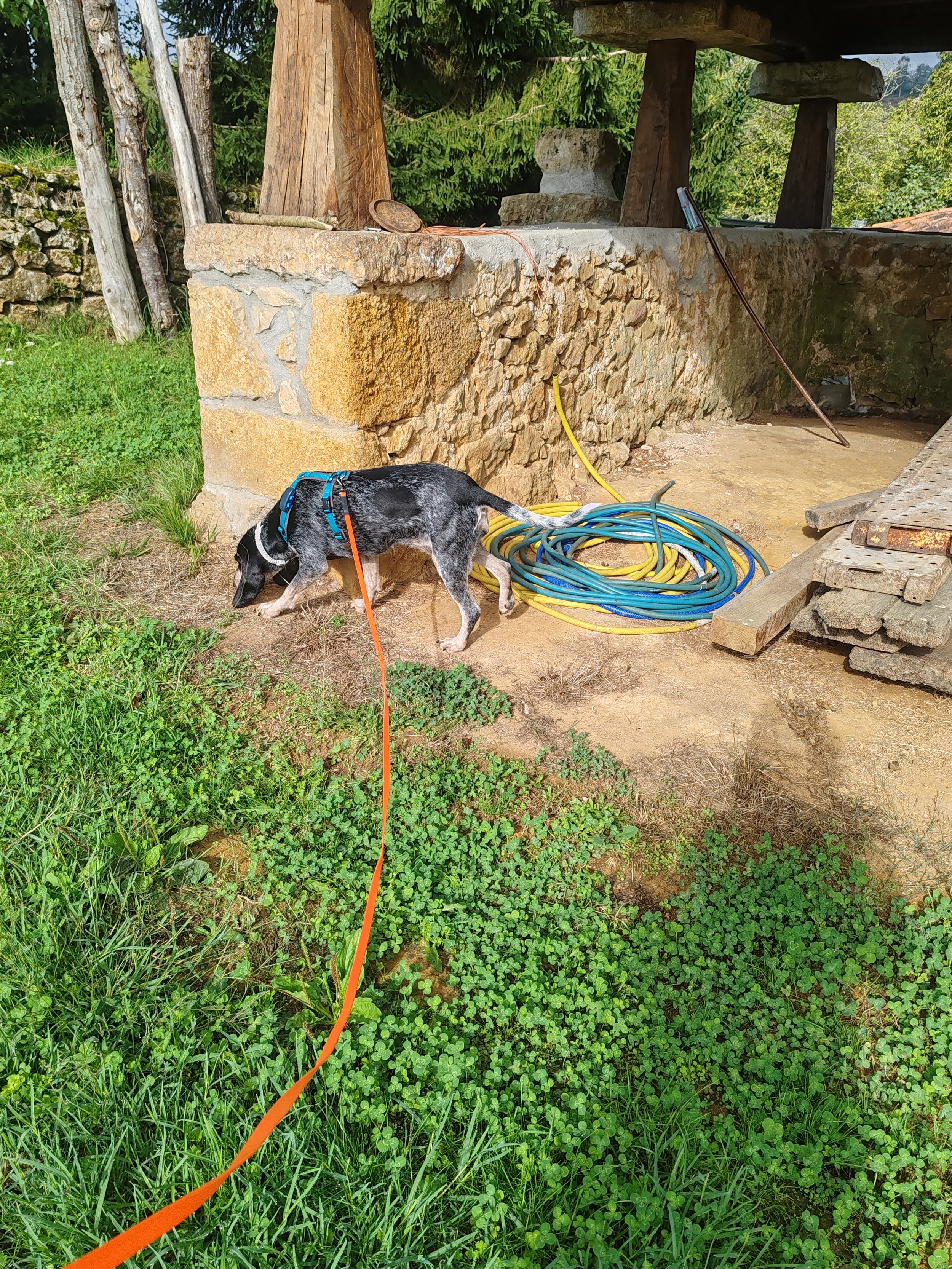
Leti from the Smiling Leash Team.

